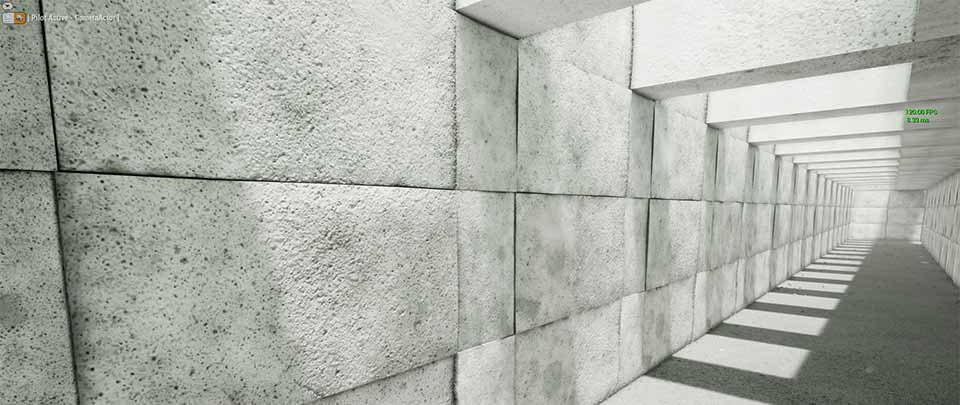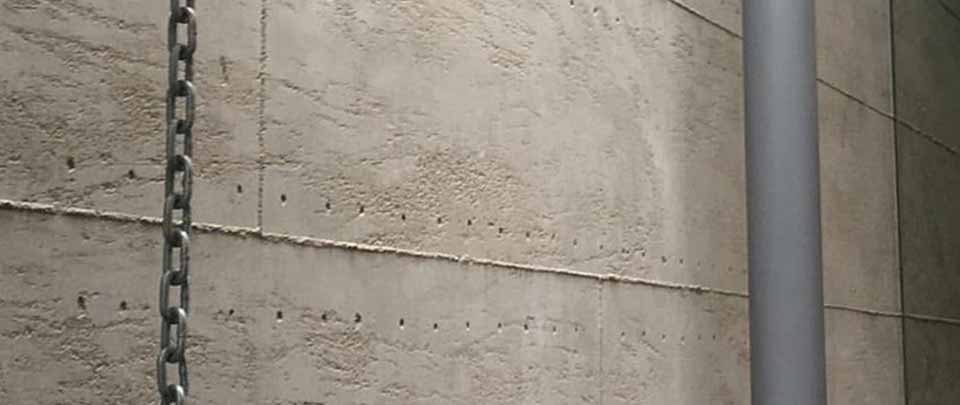
Strong Concrete Has Its Weaknesses
Concrete is by far the most commonly used construction material in the world, and with good reason. It is relatively inexpensive to make, it is strong, it is versatile, and it can be easily reinforced or modified to grant additional attributes. But it is not perfect.
Even concrete has weaknesses and, while it may be the most used construction material in the world, there is a reason it is not the only construction material used. In this post, we’re going to go over each weakness of concrete, highlighting what this weakness means in practical terms, and why it may make concrete unsuitable in certain circumstances.

Concrete Has Low Tensile Strength
There are many different kinds of strength, and concrete excels in compressible strength, which is one of the reasons it is so well suited for tall structures, where the weight of the upper regions of the structure weighs down on the lower regions.
One area where concrete is less impressive, however, is tensile strength. Tensile strength can be thought of as an ability to resist stretching. For example, if you have a long, thin concrete beam, any attempt to “snap” that beam, or perhaps twist it, would be a test of its tensile strength.
If you were to lay the beam flat on the ground and attempt to crush it, you would need inordinate amounts of force because that would be a test of compressible strength. But, if you were to rest either end of the concrete beam on something and apply force directly to the middle, it would be a test of tensile strength and would require considerably less force to break the concrete.
It should be noted that this weakness can be addressed with reinforcements, such as rebar frame or fiber, but it remains a weakness of concrete itself.

Concrete Needs Formwork/Molds
Unlike something like stone and other natural mineral construction materials, which can be cut and hewn to shape, concrete is a liquid prior to its curing. This means that, in order to use concrete, it must be poured into a mold or form that will hold it in the desired shape until it is hard enough to support the shape itself.
Of course, this could also be considered one of its advantages. Building is often an exercise in arranging square and rectangular-shaped blocks into the desired shape, but with concrete, less conventional shapes can be achieved by building the formwork and pouring the concrete in place.
If those more standard square and rectangular construction pieces are required, however, the concrete will need to be poured into an appropriate mold beforehand, cured, and then lifted into its final position.

Concrete is Quasi-Brittle
Though not brittle as such, concrete is a quasi-brittle material that undergoes a kind of softening before eventually breaking when subjected to stresses. This in and of itself is not necessarily a problem—if the concrete is strong enough to withstand the forces it is subjected to, its brittleness will never be a factor.
However, if it is pushed to breaking point, the brittle nature of the concrete means there is considerably less warning before failure. A non-brittle material would deform before failure, which would serve as an indication that things are going bad.
As with concrete’s tensile strength problem, this weakness can be mitigated by reinforcement with something like a rebar frame. In this case, the concrete itself would still fail almost without warning, but the metal frame would hold the shape of the structure for longer.

Concrete has a Long Curing Time
Few people truly appreciate how long it takes for concrete to reach its full strength. Due to the process involved in curing concrete, it can be years, even decades before it is fully cured. Of course, you don’t have to wait years before the concrete structure is useable, but it will typically take a day or two before it hardens to touch and a month before it is strong enough to use.
This trait of concrete was known to the engineers behind the Hoover Dam, who laced the structure with metal piping that they could be pumped full of water in order to regulate the temperature of the curing concrete and speed the process up. Had they not done this, the concrete in the dam would have taken over a century to cure!
While trained engineers are well aware of this process, people who are engaging in a little DIY concrete pouring are often not, and it can lead to things like driveways with tire depressions baked into the concrete because there was only a few days allowed for curing before someone decided to park a car on it.

Concrete is Bad for the Environment
As a species, our awareness of the impact we are having on our climate has never been so acute. There has been a significant spike in the average global temperature of our planet over the last thousand or so years, and many scientists agree it is because of human activity.
The primary cause is thought to be the increased level of carbon dioxide that is being pumped into the atmosphere by things like the cars on our roads, the cattle we breed for food… and concrete.
Concrete is one of the most in-demand substances on the planet at the moment, with some estimates putting it second only to water. And it is worth noting that the use of concrete requires a significant amount of water, as well. The cement industry is one of the biggest producers of carbon dioxide, so fulfilling this enormous demand naturally results in a lot of carbon dioxide.
There are other detrimental effects. Laying concrete contributes to surface runoff, which can lead to water pollution and flooding. The destruction of concrete structures results in concrete dust entering the air, which is a dangerous form of air pollution, to say the least.
It can also be argued that concrete is important in dealing with some of these problems. For example, concrete is the best material we have for handling flood control due to its hydraulic nature. It is also typically a lighter colored material, which helps deal with heat as lighter colors reflect heat rather than absorb it. However, all of the ways in which concrete can help to address these problems still pale in comparison to the alternative—a patch of natural woodland will always be better for the environment than a concrete structure.

Concrete Requires Strict Quality Control
Concrete has been the primary material for countless significant projects over the years, from skyscrapers to underwater tunnels, from rocket launch pads to enormous bridges. It shouldn’t come as a surprise, then, that the quality control required when using this material is incredibly high. Everything from the mixture of concrete to the way it is poured, how it is cured, and the length of time before it can be used is carefully monitored.
However, concrete is not just used in enormous projects; it is a key material in the construction of everything from the foundation of a garden shed to the house whose garden the shed resides in. And, as you might expect, there are often times when concrete is used, and there are no qualified engineers around.
For that reason, cement has to be meticulously crafted to ensure that it meets all the necessary standards you would want from a construction material. It is still possible for the average DIY enthusiast to get the mixture wrong, but the cement industry is keen to make sure it isn’t their fault when it happens.

Concrete has a Low Toughness
Another area where concrete’s strength is less than ideal is in its toughness, or its ability to consume impact energy. The difference between toughness and compressible strength—which is where concrete excels—can be visualized as the difference between applying a specific amount of force to the laid-flat concrete beam we mentioned above and applying that same amount of force all at once in one immediate impact.
When compared to something like steel, concrete has a surprising 1/100th the strength of steel.

Concrete has a Low Specific Strength
The specific strength of a material refers to the ratio of strength to density, which is a significant factor in determining how much of a given material is required to achieve a certain amount of strength. Concrete has a specific strength that is roughly half that of steel, meaning an entirely steel support structure could be made using half as much material as an entirely concrete support structure, yet still have the same strength. Of course, there are ways to improve the specific strength of concrete, and steel can be incorporated into the structure of the cement to improve strength also.
Final Thoughts
Concrete has many weaknesses, as this very post shows. That being said, it should be noted that the positives outweigh the negatives in most cases. And, in areas where the negatives are too critical to ignore, there are often ways to mitigate the weakness through the use of something like reinforced metal framing.
In short, there is a reason why concrete is by far and away the most commonly used construction material in the world, in spite of all its weaknesses.






